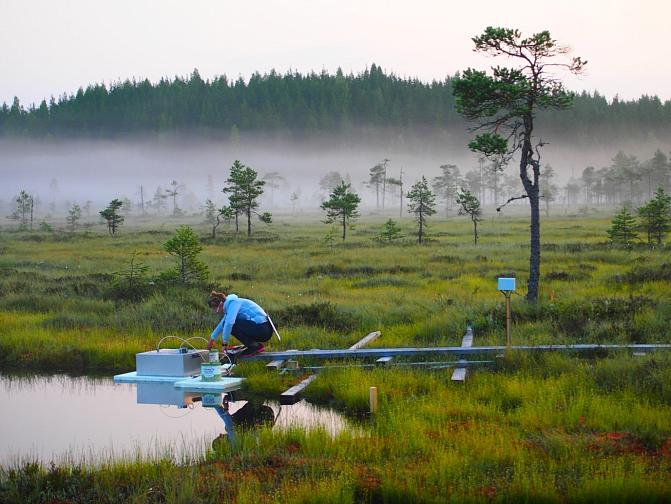About MiDiPeat
Peatlands are highly water-saturated ecosystems, where slow decomposition of organic matter makes them as the most important terrestrial storage of carbon (C). Peatlands have also societal importance since they are providing recreational values or even livelihood via natural products and tourism for local community. Large areas of peatlands in Europe have been drained for forestry, food production and energy or just for colonization. Land-use change enhances microbial decomposition and increase atmospheric greenhouse gas (GHG) emissions resulting in C storage loss thereby accelerating climate change. Still, monitoring of microbial diversity in peatland ecosystems after land-use change has received very little attention, even though microbes have a key role for the major ecosystem services such as keeping the balance between GHG emissions, C storage, nutrient cycle and water quality. MiDiPeat produces comprehensive and harmonized monitoring data on microbial taxonomic and functional diversity in peatlands and how it varies in relation to nutrient levels, land-use and management regime. Restoration of peatlands aims to reverse their biodiversity loss and to return their ecosystem functions. MiDiPeat assess taxonomical and functional microbial diversity along geographical and environmental gradients of peatlands through a harmonized monitoring approach. It will utilize so far hidden data on microbial diversity to establish proxies for the success of peatland restoration through establishing links with plant traits and methane cycling. This will provide valuable input for decision making linked to land-use and management of degraded peatlands. Overarching aim is to develop monitoring of peatland microbial diversity across land use categories by establishing links between key microbiome functions, plant community characteristics, peat biochemistry and GHG fluxes.
MiDiPeat aims to
• assess microbial diversity and plant traits in peatlands to understand how changes in land use are is reflected in GHG fluxes
• detect the key peat properties, plant diversity parameters and functional traits that are linked with microbial diversity
• develop cost-effective plant-diversity-based tools to monitor impacts of land-use changes in peatlands in terms of microbial diversity and GHG fluxes
MiDiPeat is divided into five counteracting workpackages:
WP1 Project management and coordination
WP2 Assessing microbial diversity in European peatlands
WP3 Diversity and gene expression of methane cycling organisms in peatlands
WP4 Plant community properties and peat biochemistry of peatlands
WP5 Indicators of peatland microbial biodiversity across nutrient gradients and land-use types
